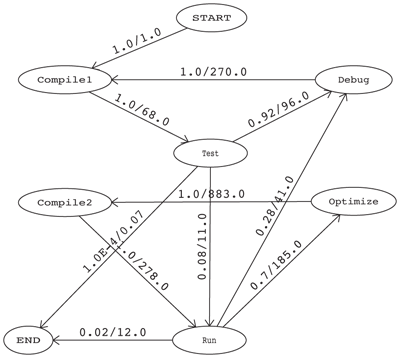
Figure 4 shows the workflow of UPC programmers. Figure 5 shows that of C/MPI programmers. These diagrams of the TMMs were prepared using the TMMsim tool described in Section 6.2. This is a preliminary analysis with a small sample size (five programmers using each language). Thus we do not attempt to draw final conclusions comparing the two languages. However, a number of aspects of these TMMs seem encouraging as regards the feasibility of this type of quantitative analysis.
First, the fitted transition times and probabilities from the 2006 classroom experiment are quite similar to those from the 2004 classroom experiment. Not surprisingly, most (92% to 95%) of the “test” runs lead back into the debug cycle. We see that a “test” run is successful 8% of the time for C/MPI and 5% of the time for UPC; however, in the optimization cycle, 28% of C/MPI runs introduced new bugs compared to only 24% of UPC runs. It is not clear whether these differences are significant for this small sample size. A programmer spends much longer to attempt an optimization (763 seconds for UPC and 883 seconds for C/MPI) than to attempt to remove a bug (270–271 seconds). The time to optimize UPC (763 seconds) is smaller that for MPI (883 seconds), suggesting perhaps that UPC optimization is carried out in a more small–granularity, rapid–feedback way.







